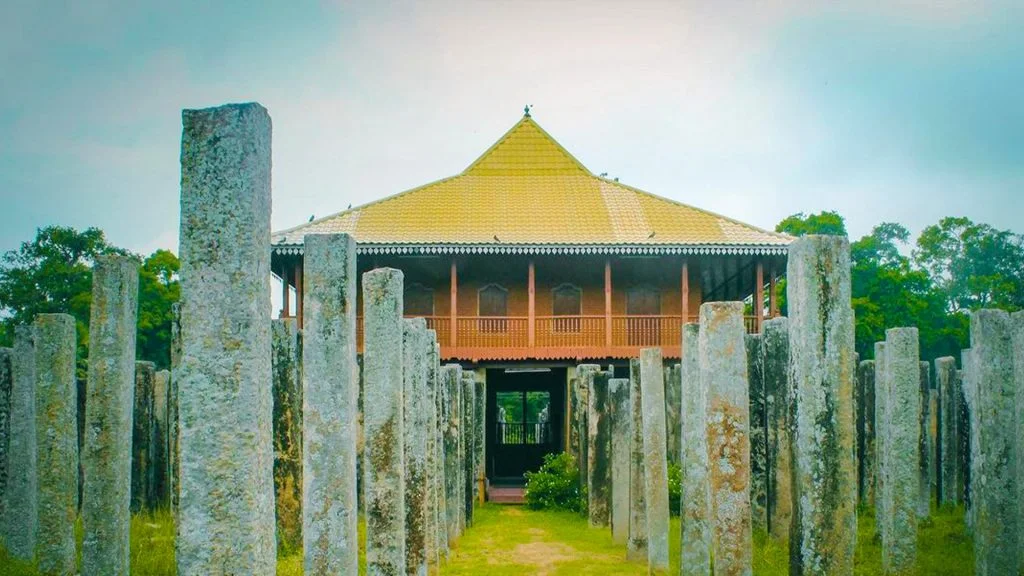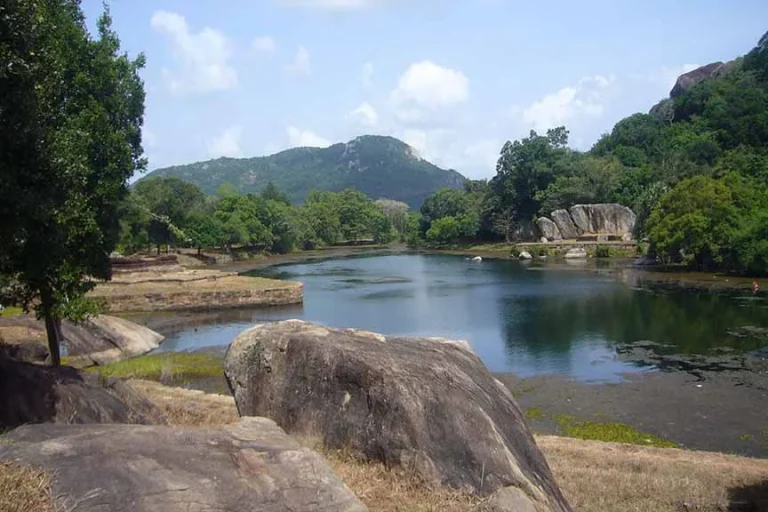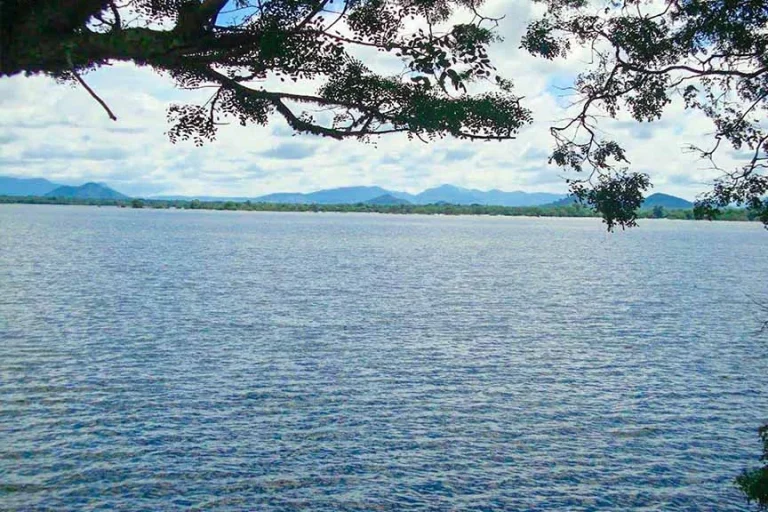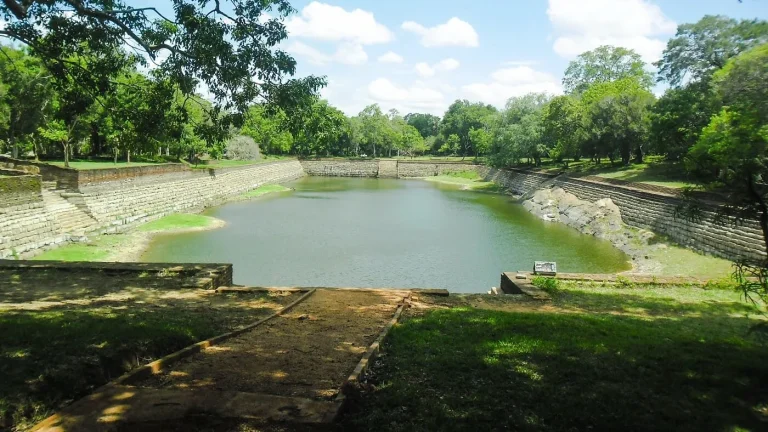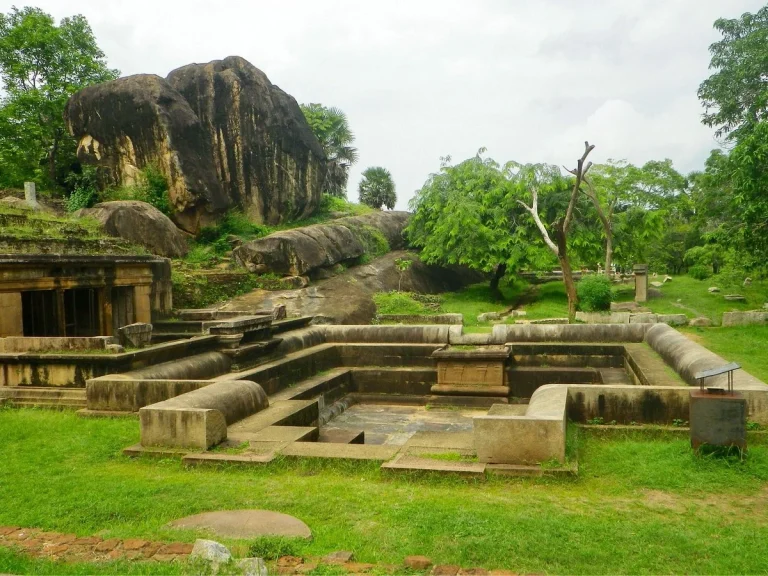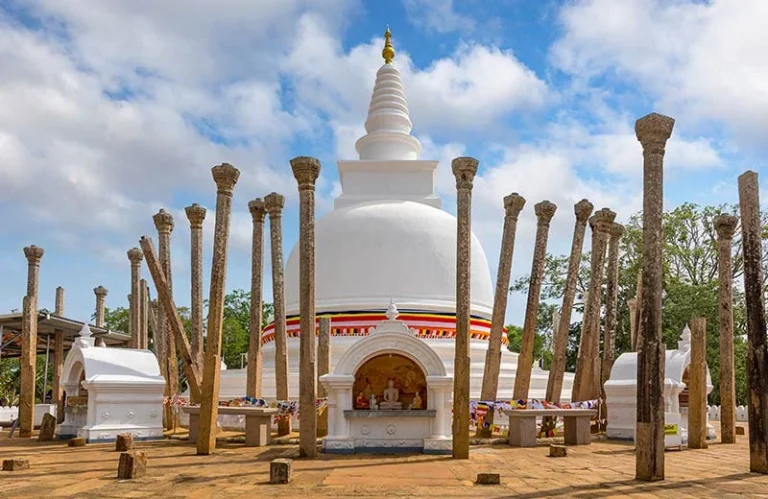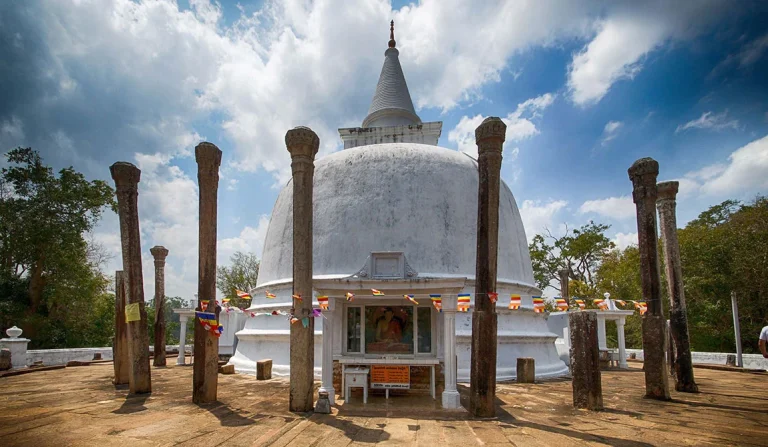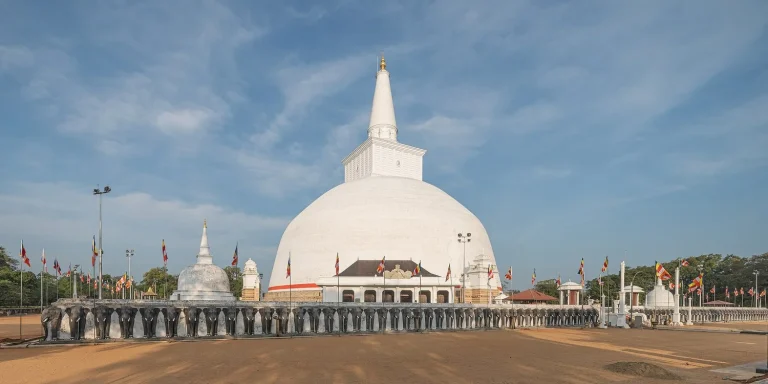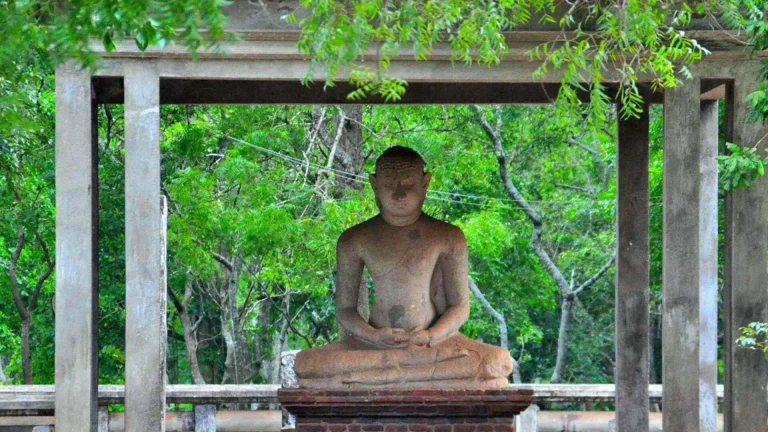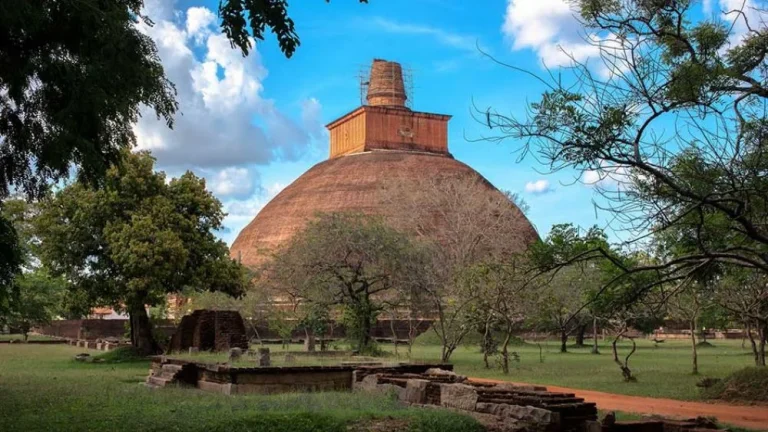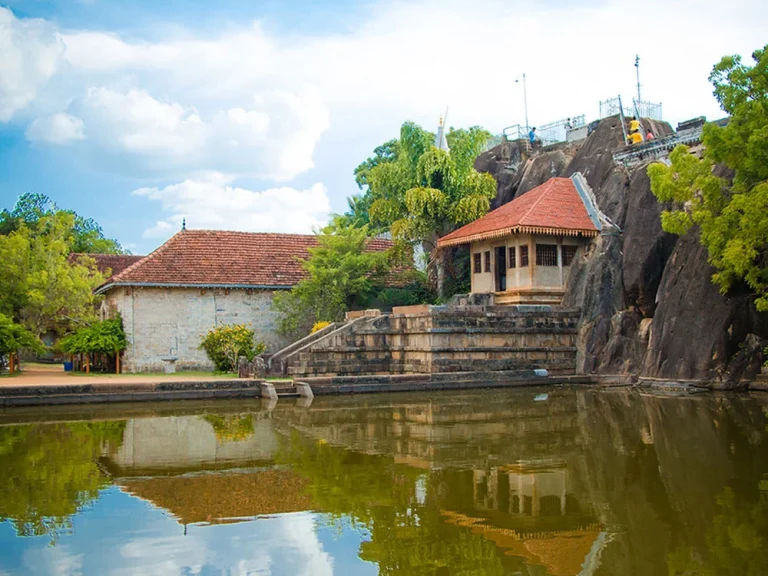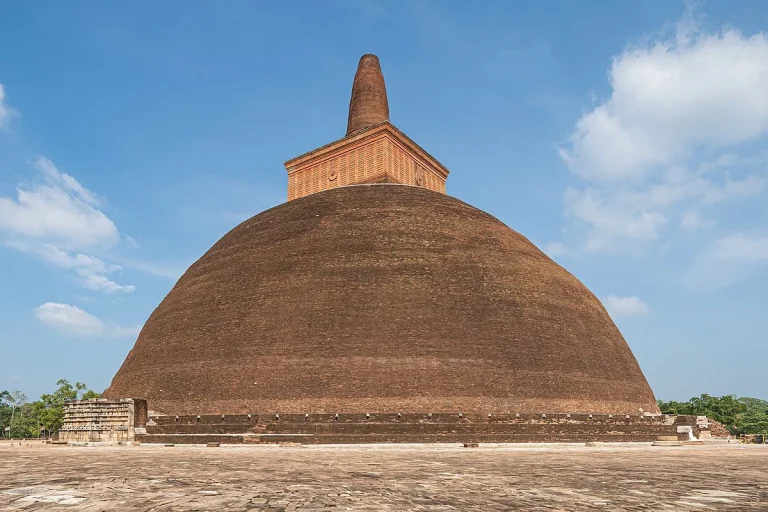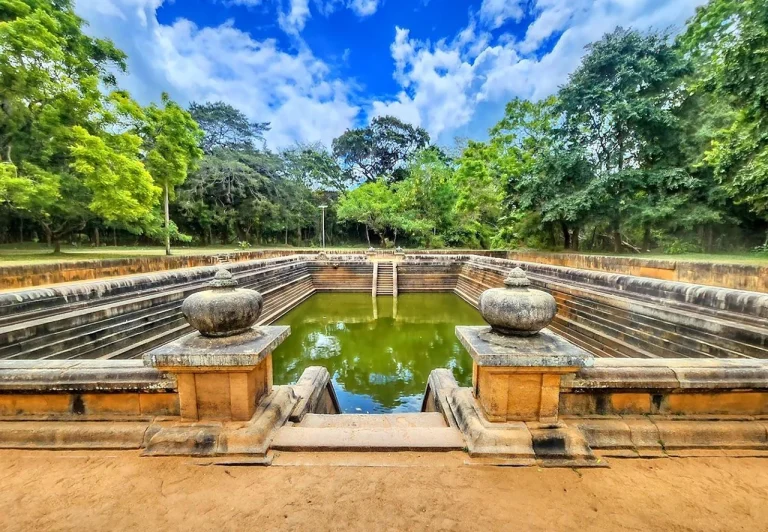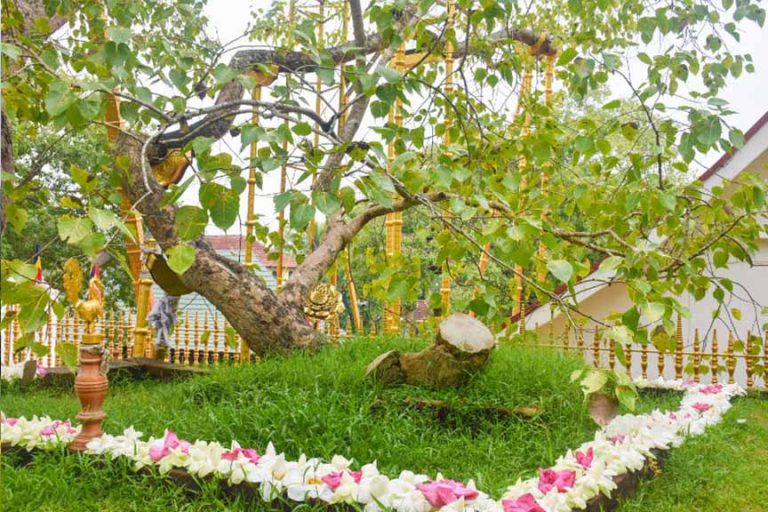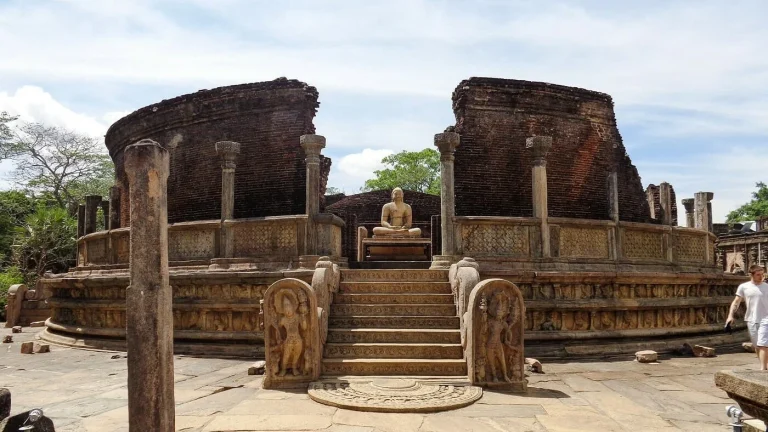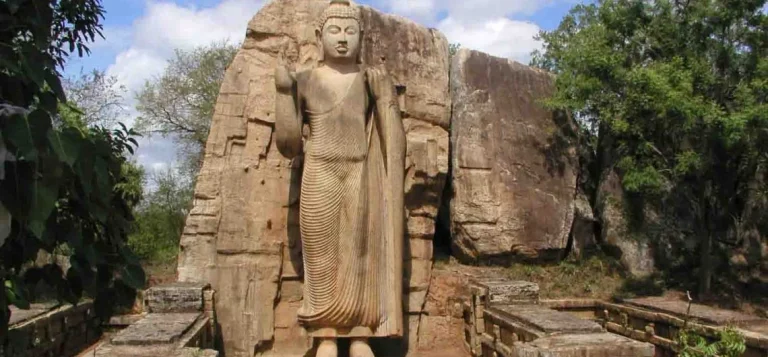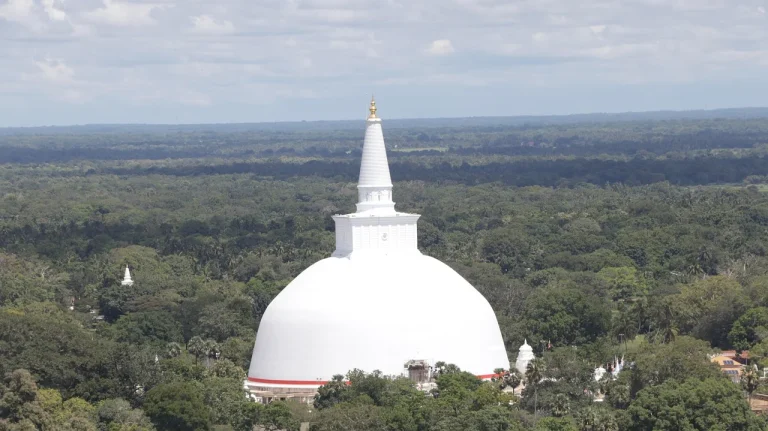All Provinces
Anuradhapura Lovamahapaya: Exploring the Architectural Marvel of Sri Lanka
Nestled in the ancient city of Anuradhapura, Sri Lanka, Lovamahapaya is a historical and architectural wonder that dates back over two millennia. Known as the Brazen Palace, this ancient structure was a grand assembly hall for Buddhist monks, showcasing the grandeur of Sri Lankan engineering and religious devotion. For those planning a visit, understanding the historical significance, architectural marvel, and cultural impact of Lovamahapaya can deepen the appreciation of this UNESCO World Heritage site.
History of Lovamahapaya
Lovamahapaya was constructed during the reign of King Dutugemunu in the 2nd century BC. It was a nine-story building with a roof made from bronze tiles, hence the name “Brazen Palace.” The structure was originally used as a residential complex and meeting hall for the Maha Vihara monks, housing up to 1,000 monks at a time. This building stood as a symbol of the flourishing Buddhist culture and the architectural prowess of ancient Sri Lankans.
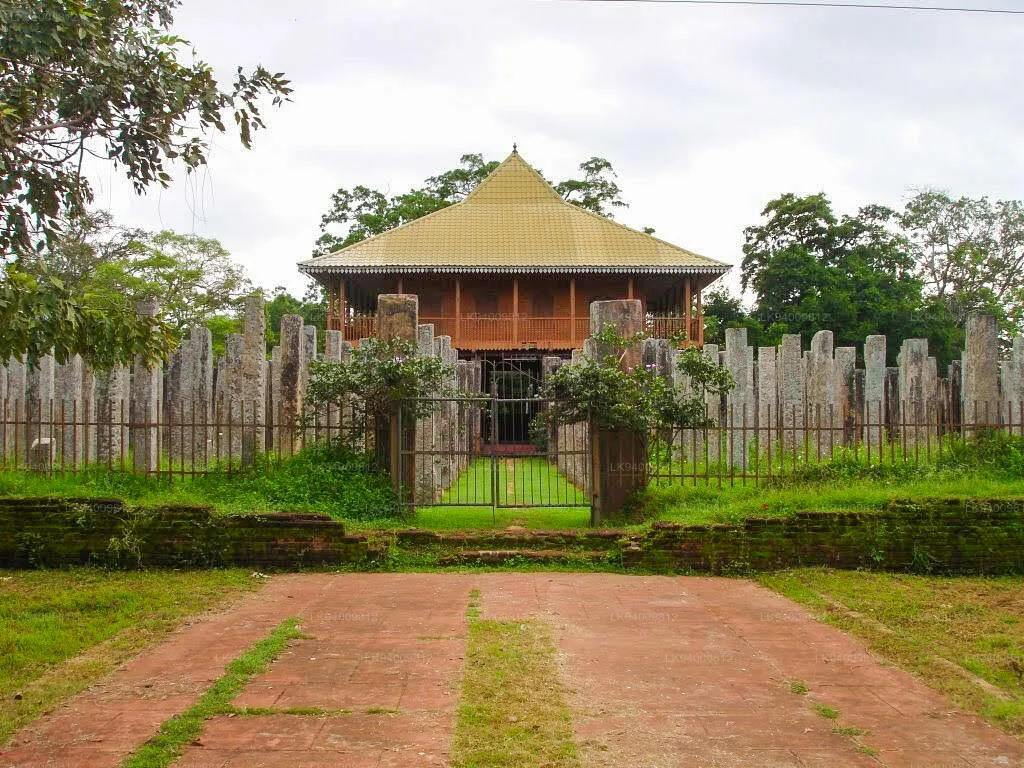
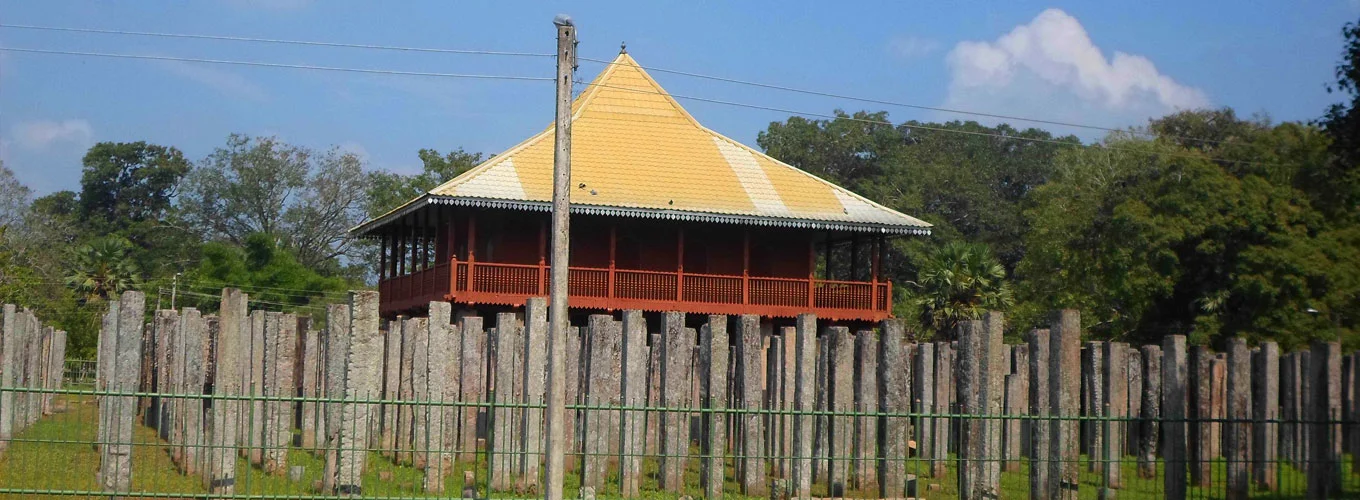
Architectural Significance
At its peak, Lovamahapaya was an awe-inspiring structure with nine floors, supported by 1,600 stone pillars, each standing as a testament to the advanced craftsmanship of the time. The building was lavishly adorned with bronze tiles and precious gems, a reflection of the wealth and religious devotion of the Anuradhapura kingdom.
Although the original structure was destroyed by time and invasions, the stone pillars that remain today provide a glimpse into its former glory. These pillars are arranged in 40 rows of 40 each, covering a large area near the Sacred Bodhi Tree. Visitors can explore this site and envision the grandiosity of the palace in its prime.
Cultural Importance
Lovamahapaya holds immense cultural and religious significance. As an integral part of the Maha Vihara, one of the earliest Buddhist institutions in Sri Lanka, it was the epicenter for religious, scholarly, and political activities. The palace served as a venue for important meetings and ceremonies, reflecting the close relationship between the Buddhist clergy and the monarchy.
For Buddhists, Lovamahapaya is a symbol of spiritual leadership and the spread of Buddhism in Sri Lanka. Its proximity to the Jaya Sri Maha Bodhi, one of the oldest trees in the world and a sacred relic in Buddhist culture, adds to the religious importance of the site.
Visiting Lovamahapaya: A Traveler’s Guide
For modern-day travelers, a visit to Lovamahapaya offers a unique blend of history, architecture, and spirituality. Here’s what to expect:
Location: Lovamahapaya is located within the ancient city of Anuradhapura, approximately 200 km north of Colombo. The city is easily accessible by road or train, making it a convenient day trip or a stop on a broader cultural tour.
Best Time to Visit: The best time to visit Anuradhapura and Lovamahapaya is during the cooler months from December to March, when temperatures are more comfortable for sightseeing. The rainy season, from May to September, might affect travel plans, so planning ahead is essential.
Dress Code: As a significant religious site, it is important to dress modestly. Visitors are expected to cover their shoulders and knees when exploring the sacred grounds. Shoes should also be removed when entering the premises.
Entrance Fees: There is usually an entrance fee for foreigners to explore the Anuradhapura Sacred City, which includes Lovamahapaya. Local guides can be hired for a more in-depth understanding of the site’s history and significance.
Other Nearby Attractions: While in Anuradhapura, make time to visit other iconic sites such as the Jaya Sri Maha Bodhi, Ruwanwelisaya, and Thuparamaya Dagoba, all located within close proximity to Lovamahapaya.
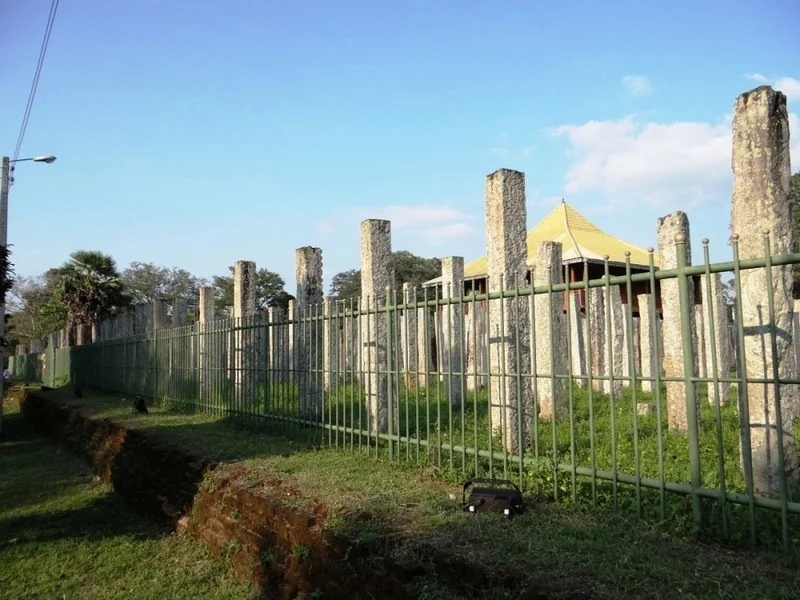
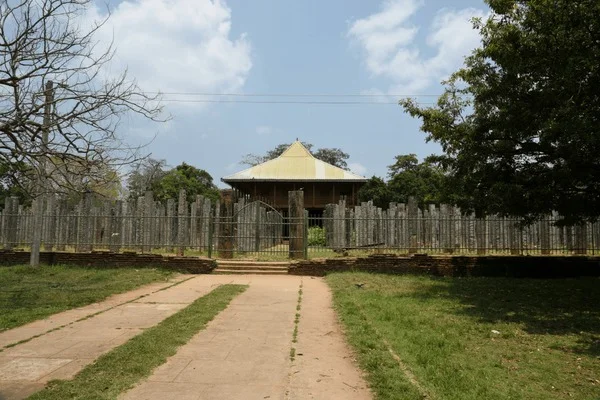
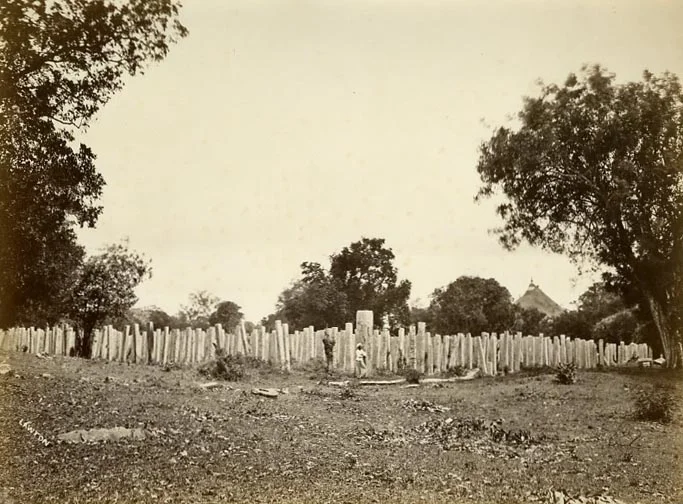
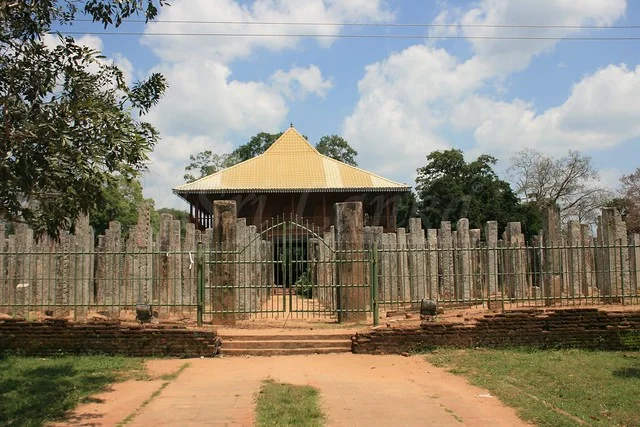
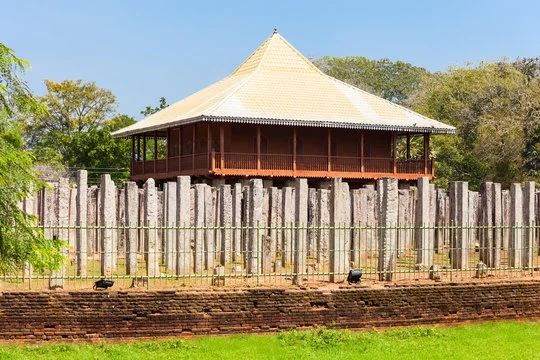
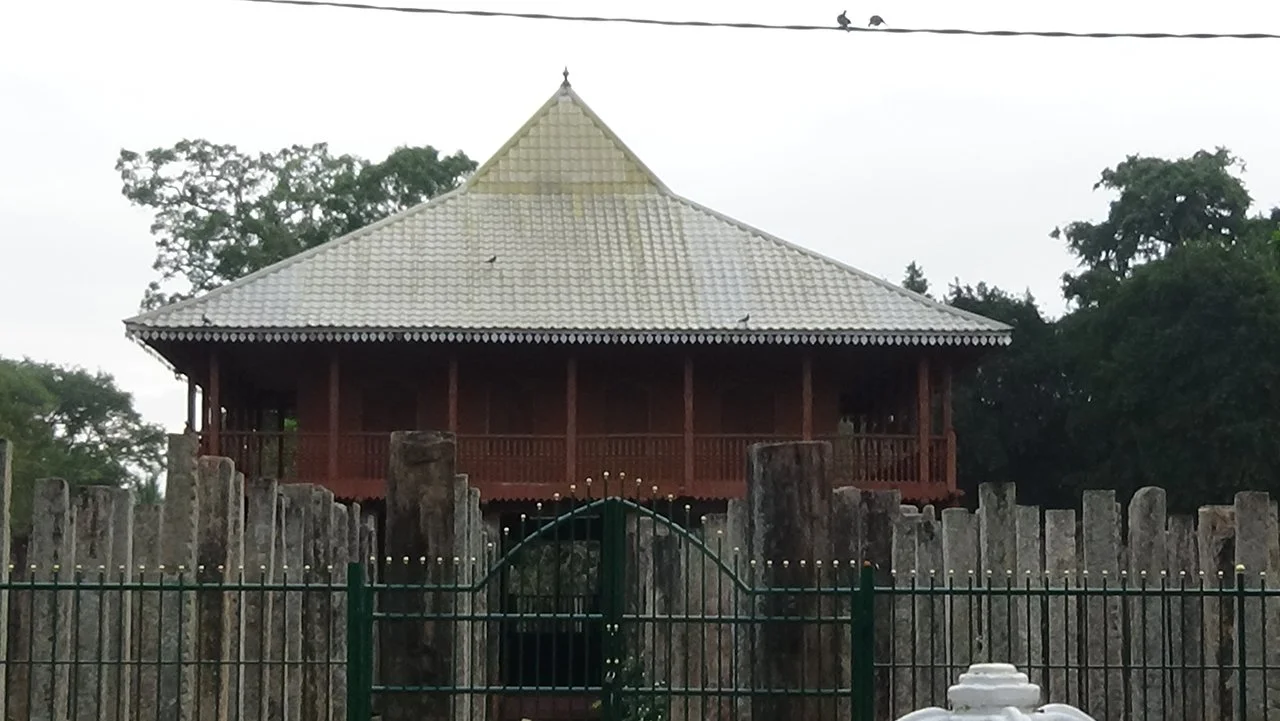
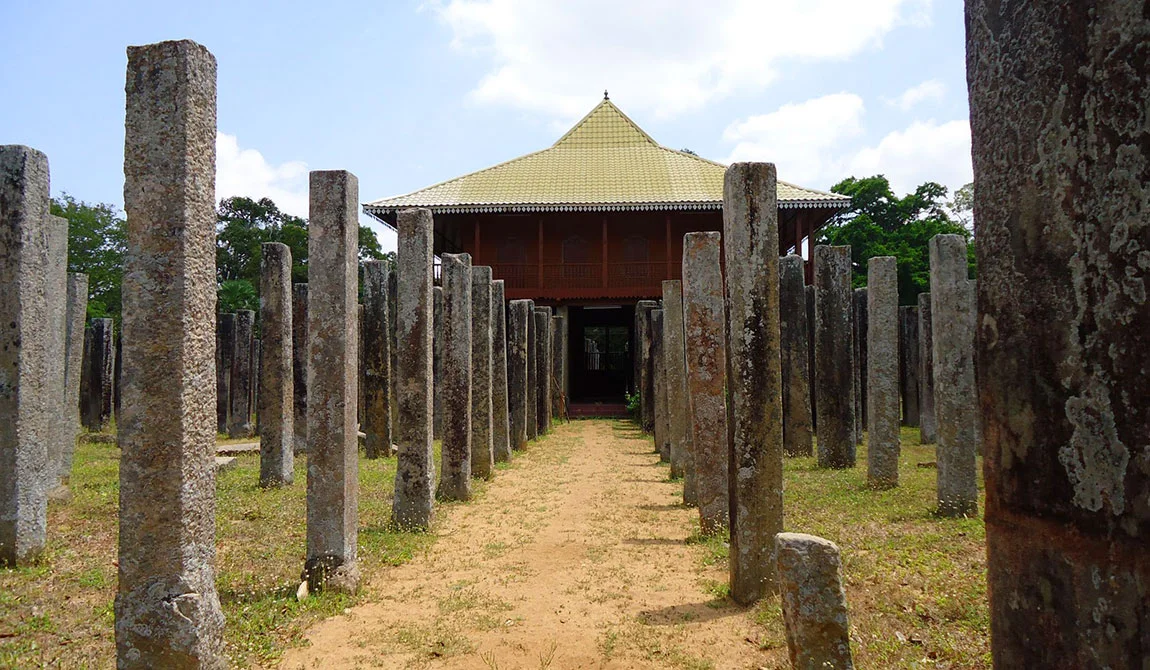
Tips for a Meaningful Visit
- Hire a Local Guide: Knowledgeable local guides can provide fascinating insights into the history and significance of Lovamahapaya and other nearby monuments. Their stories will enrich your experience and bring the ancient ruins to life.
- Plan for Sun Protection: The site is largely open-air, so ensure you are equipped with a hat, sunscreen, and water. There is little shade available around the stone pillars, and temperatures can get high during midday.
- Respect Religious Customs: As Lovamahapaya is part of a sacred complex, be mindful of local customs. Maintain a respectful distance from religious ceremonies and avoid loud or disruptive behavior.
Conclusion
Lovamahapaya is more than just a collection of stone pillars; it is a symbol of Sri Lanka’s ancient Buddhist heritage and architectural brilliance. A visit to this site allows you to walk through the remnants of a glorious past, offering a spiritual and historical journey into the heart of ancient Anuradhapura. For those interested in Buddhist history, architecture, or the cultural heritage of Sri Lanka, Lovamahapaya is an unmissable stop on your travel itinerary.
By visiting this awe-inspiring site, you not only witness the grandeur of an ancient civilization but also contribute to the preservation of one of Sri Lanka’s most treasured landmarks.
See More Tourist Places Click Here

